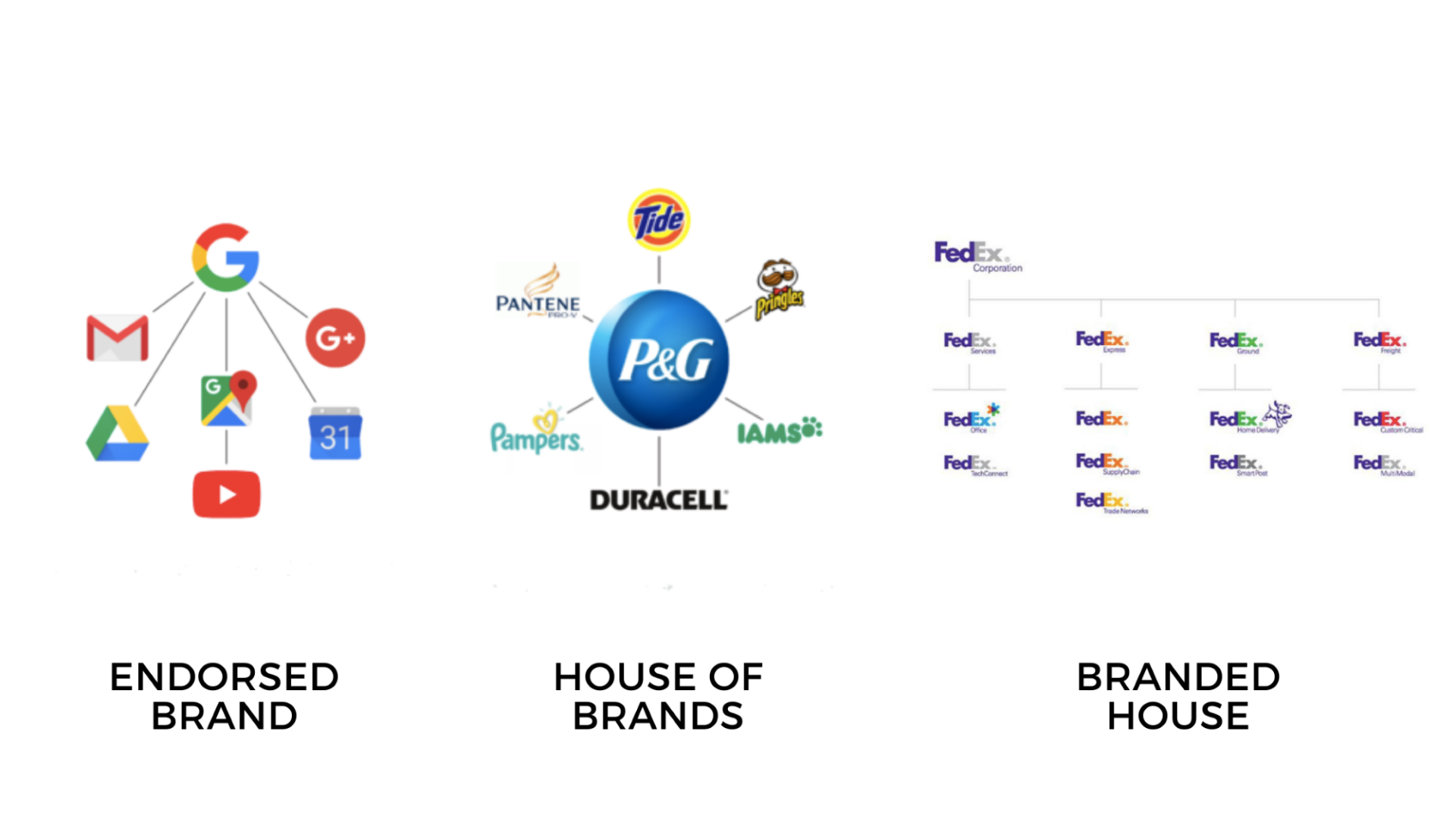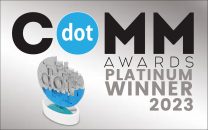
Branding Agency
We help your customers identify with your brand.Get in touch with your inner self.
Brand Architecture
As one embarks on building a brand, it’s important to identify the architecture it will live within.
In essence, brand architecture is the way we organize the different subsections of a larger brand. Brand architecture shows us how the sub-brands of a larger whole are organized and how they all relate to each other. It can help marketers and stakeholders alike see how to keep parts of a brand separate when needed, and also how to allow them to work together to boost one another in the marketplace.
When structuring brand architecture, there’s essentially three different ways we can go about doing it: the Endorsed Brand, the House of Brands, or the Branded House. While clear advantages exist for each model, there are also unique challenges within each. Below we outline and define the three different types of brand architecture, and provide insight into their unique advantages and challenges.
The Endorsed Brand
An endorsed brand sort of meets in the middle of the other two brand architecture models. A parent brand does form an umbrella over a host of other related brands – much like in the house of brands – but the related brands aren’t necessarily going to share a name with that parent like in the branded house. That being said, in the endorsed brand model, the parent brand plays a much bigger role in the children’s lives than in the house of brands.
Google is an example of a hybrid brand structure where some brand extensions feature the parent name, while others do not. This format provides flexibility in naming and brand building. However, some consumers may be unaware of the connection between the parent brand and companies that carry a different name (between Google and YouTube, for example).
Advantages:
They can leverage the legacy, equity, and reputation of the parent brand.
Brand awareness is already established – not needing to be built from nothing.
There’s mutual benefit whenever any of the brands experience growth.
An established parent brand provides some security and safety.
Marketing effectiveness is enhanced and comes at a better ROI because of the reputation of the established parent brand.
Challenges:
Brand identity and reputation are tied to the parent and peer brands.
Although sub-brands can operate independently, they exist within a strict boundary on matters of identity, culture, values, and beliefs.
Because an intricate and complicated chain of command is in place, sub-brands tend to experience delayed market responses when it comes to innovation, ideation, or reacting to market conditions.
The House of Brands
The house of brands is basically the opposite of the branded house. There is a parent brand, but it’s not reflected in the sub-brands in an obvious or blatant way. In fact, the parent brand is in the background, often overshadowed by one or more of its sub-brands. You’ll see this brand architecture model more in situations where a holding company buys up subsidiaries—to most consumers, the parent is irrelevant compared to the individual products that it distributes.
One brand architecture example for the house of brands is Procter & Gamble, with dozens of product brands underneath the parent P&G brand. This structure makes sense for P&G due to its large number of products, many of which have been marketed for decades under the product name. Changing the name of something like Crest to match the Procter & Gamble parent brand would only serve to confuse loyal customers. In this way, P&G retains the brand equity of all their products.
A house of brands might also be something of a hybrid, where one of the “sub-brands” is also the parent. A prime example of this is Coca-Cola. Coke itself and Diet Coke (and Coke Zero, etc.) obviously share their name with The Coca-Cola Company. But then there are other product brands like Sprite, Tab, Fanta and Dasani, who do not. Obviously, a closer look at the packaging reveals the connection, much like a P&G product would – but that connection is never overstated so as to not interfere with the equity, legacy, and reputation of the sub-brand.
Advantages:
If a sub-brand goes through a crisis, it does not necessarily harm the other brands.
You get the benefit of full creative liberty in building an identity system: freedom to individualize brand strategy, naming, visual identity, and messaging.
Opportunity for presence in different market niches, targeting different audiences.
A decentralized chain of command allows for sub-brands to flexibly curate market responses when it comes to innovation, ideation, or reacting to market conditions.
Challenges:
Every brand needs its own strategy, identity, and marketing activities which require greater financial investment.
The time and resources involved in planning and implementing the brand activities will be greater than that of a brand architecture centered around a singular identity.
Success among the sub-brands will not be directly attributed to the parent brand.
The Branded House
In the branded house, a parent brand—typically one with some clout—runs the show. All of the sub-brands are subordinate to the parent brand, and they usually will share a name with a qualifier to explain exactly what that sub-brand does.
FedEx is a classic example of the branded house brand architecture model, with their operating companies and portfolio of solutions all falling under the name of the parent brand. This structure makes for a consistent experience, minimizes confusion, and builds expansive equity for the corporate brand.
Advantages:
One unified brand strategy offers a simplified solution for all products.
Saves cost by not having to manage and market separate brands.
Customers are more accepting of new products that come under the same brand umbrella.
As the main brand grows, the sub-brands automatically receive recognition.
Challenges:
A one-size-fits-all strategy might not work for some products.
Reputation is shared among all brands in the house. If one brand suffers a backlash all brands suffer because of it.
It is difficult to maintain one brand identity across multiple brands and still keep each individual brand’s uniqueness intact.
Mergers and acquisitions come with their own risks. For example, when Microsoft acquired Skype, users lost trust in it.

Need logo help?
We are creative experts with decades of graphic design experience, which we use to create your unique logo that accurately and visually delivers on the promise of your brand. We generally follow a multi round logo design process. So, we will go through a logo questionnaire series to dig into feedback and history right from the start. Next we go through multiple steps depending on the depth of the project (basic logo all the way to brand messaging framework and guide). We are extremely hands on with the development of each logo and pride ourselves in providing everything you need to absolutely adore the logo that embodies your brand.





















